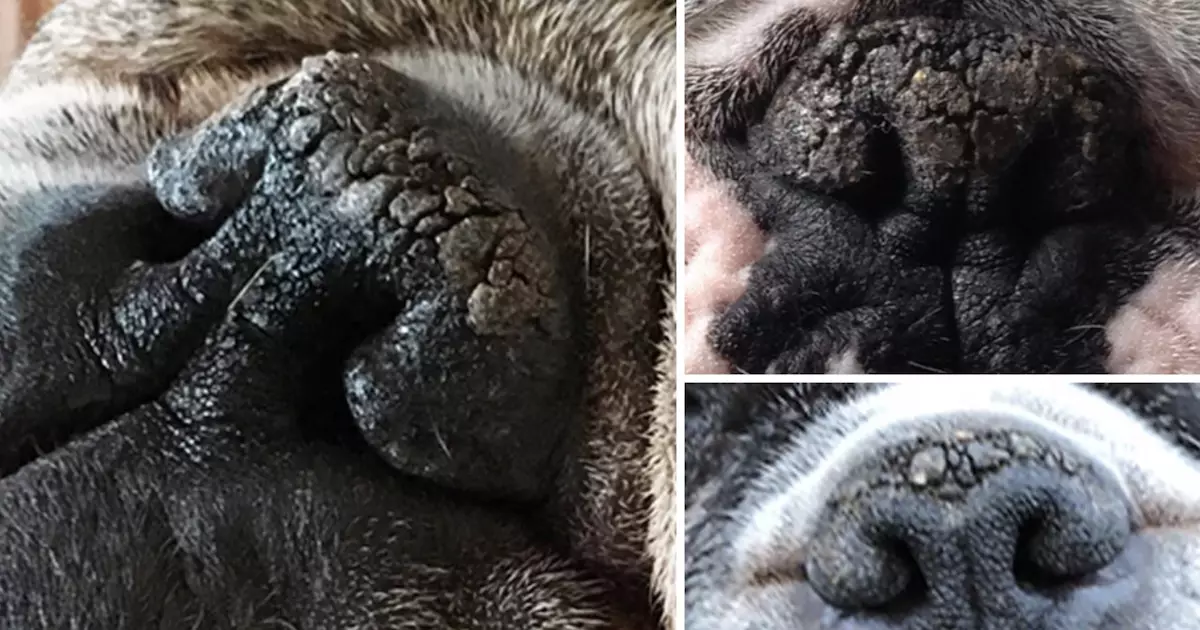Nasal hyperkeratosis, a condition that manifests as a thickening or crustiness of a dog’s nose, is far more than a mere cosmetic issue. While many dog owners may believe that having a dry nose is a natural occurrence, the reality is that nasal hyperkeratosis is indicative of a deeper underlying issue. Characterized by an excess production of keratin—a protective protein—this condition can lead to discomfort for your furry friend. Although it is not life-threatening, it can significantly impact their quality of life by hindering their ability to engage with their environment, as dogs rely heavily on their keen sense of smell.
The Breeds Most Affected
While any dog can be afflicted by nasal hyperkeratosis, certain breeds appear to be more prone due to their genetic makeup and physical characteristics. Flat-faced breeds like Bulldogs and Pugs, alongside heavy-bodied dogs such as Bullmastiffs and Boxers, often exhibit these symptoms, likely due to their distinct physiological traits that may inadvertently weaken their immune systems. Interestingly, this leaves us pondering whether these traits are mere genetic quirks or evolutionary disadvantages masking deeper health issues. Smaller breeds, despite their seemingly robust nature, can also show signs of nasal hyperkeratosis, thus highlighting a range of dog sizes susceptible to this condition.
Addressing the Issue with Care
When it comes to alleviating the discomfort of nasal hyperkeratosis, pet parents should consider utilizing specialized oils and balms designed explicitly for the canine snout. Products like Natural Dog Company’s Snout Soother have garnered praise for their effective formulation that combines lighter oils with heavier butters to ensure multiple layers of moisturization. Using such products not only brings immediate relief but also allows for the gentle removal of hardened keratin, creating a cycle of healing that diminishes the appearance and discomfort associated with this condition.
The process of applying these balms requires diligence; a consistent routine of 2-3 applications daily can be the key to success. However, the need for subsequent maintenance sessions should not be overlooked; every dog’s condition varies, and the frequency of application might need to be adjusted based on individual responses—especially if they are older or have more severe symptoms.
Alternative Solutions for a Softer Snout
In addition to specialized balms, pet owners may want to explore a variety of alternative solutions to enhance their dog’s nasal health. Humidifiers can improve air quality, especially during dry months, potentially mitigating the factors contributing to nasal hyperkeratosis. Moreover, ensuring a balanced diet rich in omega fatty acids can strengthen the overall health of the skin, including the sensitive area around the nose.
As more information surfaces regarding canine health, it is essential to foster an open dialogue with veterinarians. Engaging in proactive discussions about nasal hyperkeratosis can not only provide insight into your dog’s wellbeing but also uncover additional preventive measures tailored for your beloved pet. While nasal hyperkeratosis may seem like a trivial issue to some, it deserves attention and care, ensuring that our canine companions lead comfortable and engaging lives.

